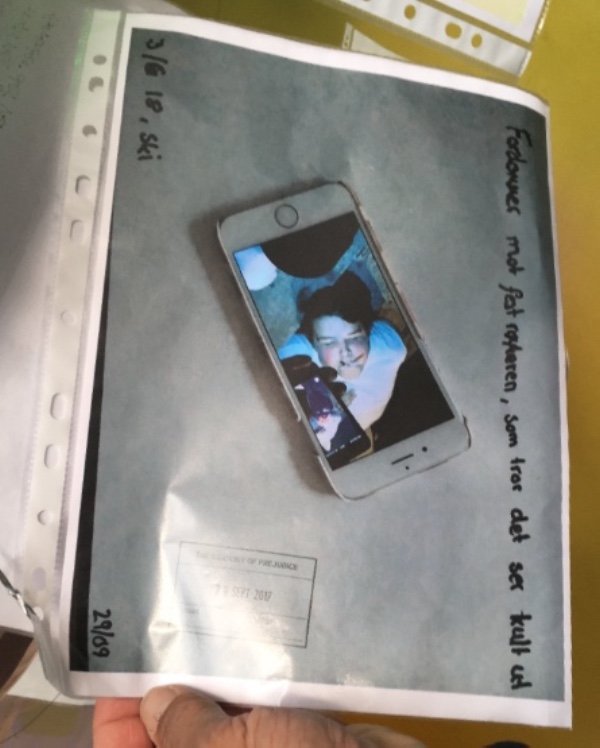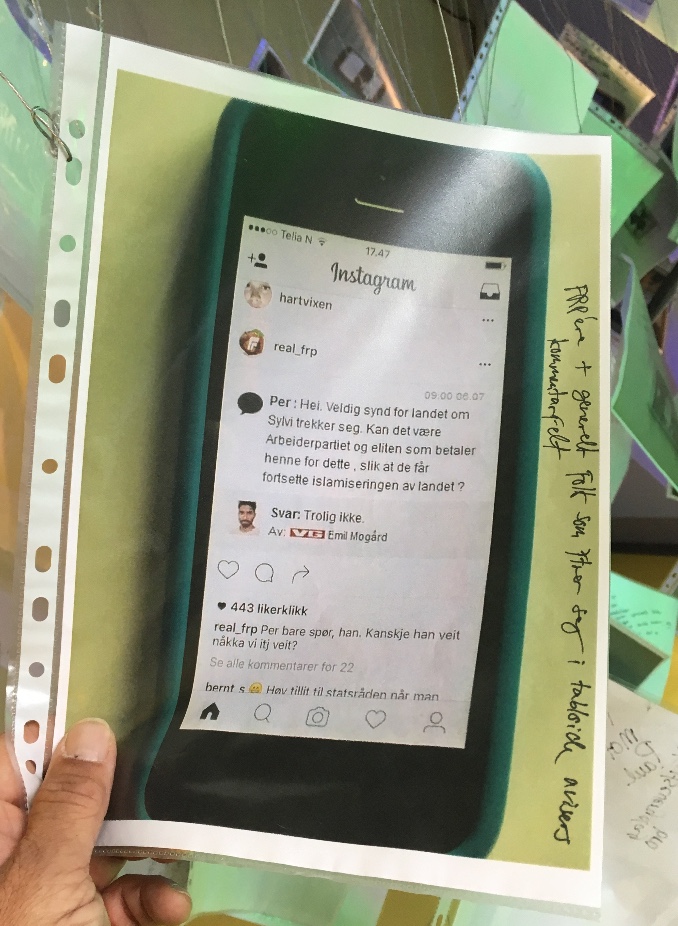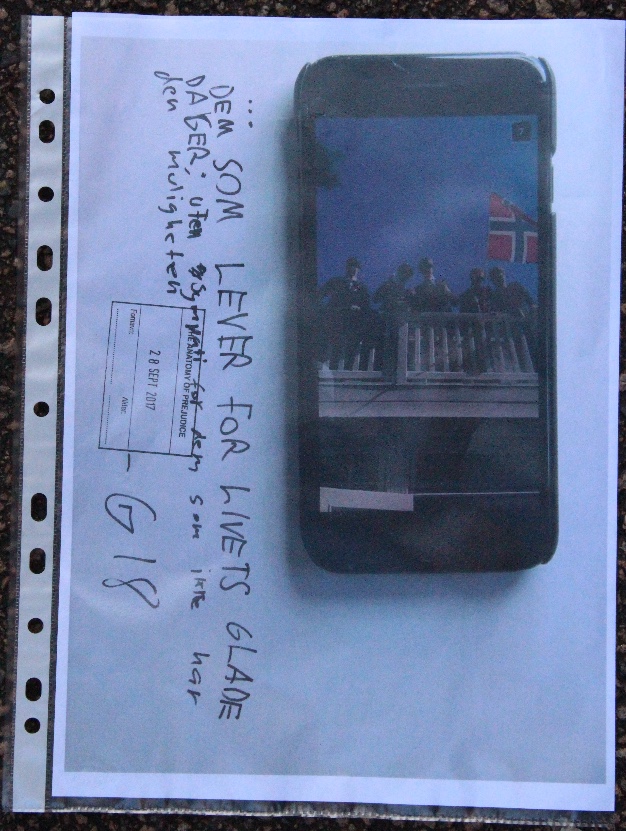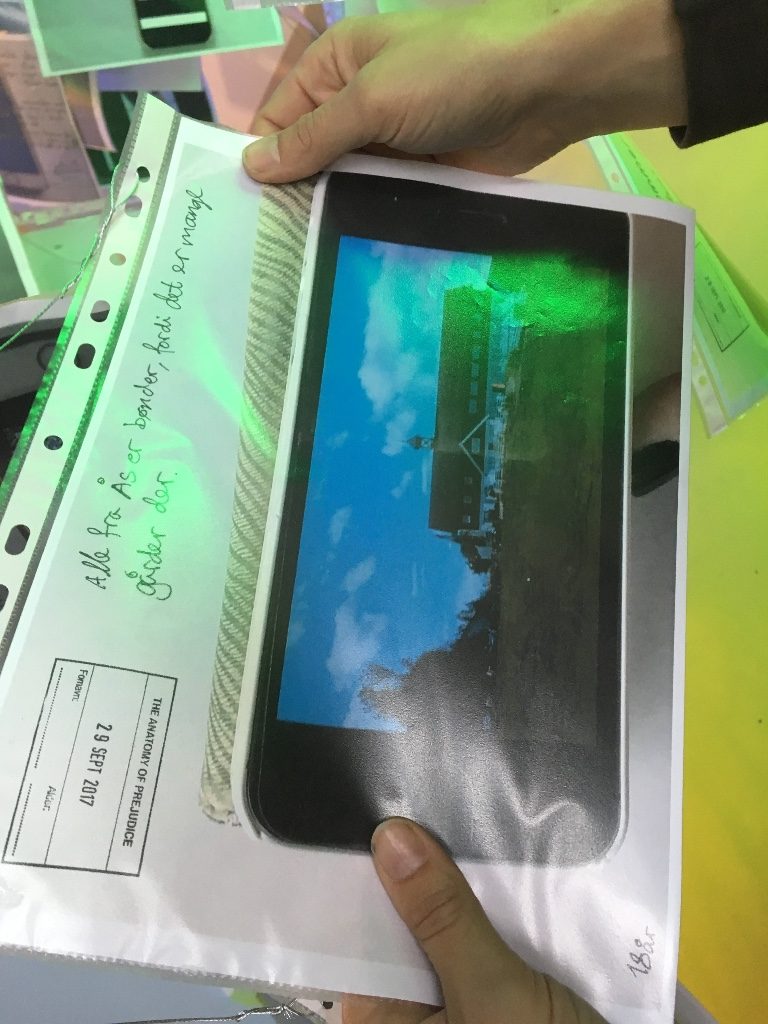2017 – Presentation about EXTRACTEUR as art format in connection with the exhibition The Anatomy of Prejudice by Thierry Geoffroy, Oslo, NO.
The EXTRACTEUR
“The Anatomy of Prejudice”
– an art format created by
Thierry Geoffroy / COLONEL
"The Anatomy of Prejudice" 5-year-growing-exhibition on prejudice and xenophobia By Thierry Geoffroy/COLONEL @IKM Museum in Oslo Address: Tøyenbekken 5, Oslo Opening hours: Tuesday - Sunday from 11.00 to 16.00
What is an art format?
An art format is a framework developed by the artist and based on a set of rules and involvement of participants. The art format is both a framework and an artwork in itself.“An art format is a strategic artistic response to the globalization” says Thierry Geoffroy/ COLONEL. This means that the format is a replicable model or formula and can, in dialog with the artist, also be activated without the artist’s physical presence. However, it is important to underline that the replicability of the art format does not mean reproduction of an identical copy of the artwork because an art format is each time being activated according to a specific time- and space context which generates new output.
Some of the most known art formats created by Thierry Geoffroy /COLONEL are EMERGENCY ROOM (mostly for art museums), CRITICAL RUN (mostly for urban space), SLOW DANCE DEBATE (conferences), EXTRACTEUR (research-based projects). All of the formats are training the awareness muscle by stimulating the participant’s reflection. The fundamental bricks for the art formats especially the connection between life and art, the flexibility of exhibition platform and involvement of others can be found in a manifesto, written by the artist in 1989, in which he describes several types of moving exhibitions.

The EXTRACTEUR is an art format specially created to extract information and opinions from participants, turning the collected data into artistic material for the creation of object- or exhibition based artworks.
The EXTRACTEUR is an artistic way of doing investigations through collected text and images. The artist starts by defining the rules for the data collection. Several parts of the process make the artist’s method different from the scientific or academic one; Especially the artist’s way of combining the factual and the poetic interpretations of data into one expression.
At IKM Museum in Oslo, every week, around 200 young people are invited to participate in the EXTRACTEUR project. They look for traces of prejudice and xenophobia in their own phones, scan and take a copy of them on a specially designed machine, then add personal explanations and reflections before hanging their, at this point, almost evidence or document paper sheets on the jungle-like growing sculpture. By the end of the 5-year long exhibition period, the collected data will consist of a huge number of detections of xenophobia-signs reported by 50.000 active participants.

The information collected during the exhibition period is aesthetically forming part of a monumental sculptural artwork, but can at the same time be considered as valuable data for scientific and academic research about the anatomy of prejudice.
It is the collaboration with the IKM museum and their engagement in the project that allows us to anchor the project across the artistic and academic field. EXTRACTEUR format activated in IKM is not a ufo-like structure, detached from the museum, but rather an organically connected part which grows out of an honest exchange of ideas, experiences and motivations.

The motivation of the artists shines strongly through the layers of form and shape. In the case of IKM the artist shares the humanistic mission of the museum to fighting prejudice.
Even though the motivation is clear it is not the artist’s opinion that shines through. The artist sets the frame in order to give the word to others. What we experience in the exhibition is not one voice but many voices which are put together and shaped into one artwork.
The coexistence of collective and the personal is triggering the question of authorship. The participants are turning the mirror towards themselves in order to find signs of prejudice in their own mobile phones (their own individual private zone) Still, the project has a strong element of collectivity in the moment each individual opinion becomes part of a bigger installation. (physically taking shape of a jungle).

Mobil phone photographic project
“The anatomy of Prejudice” can also be seen through the lens of photography. There are several ways of meaningful analyses.
One would be to classify the project as cameraless photography. The artist is a photographer, but instead of shooting the picture himself with the camera, he “photographs” through a participation of others. The participants become the artist’s camera lens. Each A4 sheet is apart from being an informative document useful for analyses, also a photographic artwork which can be valued aesthetically. These two analyses support each other.
The visual photographic aspect of the artworks can, for example, activate the sociological reflection on the multi-functional usage of phone-devices today. The aesthetics (such as size, colour, type of image as well as the combination of elements) reveals the way how the young generation is communicating and distributing information via a mobile phone; Their tendencies to combine image, text and video in one and same expression; Their ability to react up to date both with private and publicly accessible material: And their navigation between social platforms with shared opinions and the private platforms with individual reflections.







